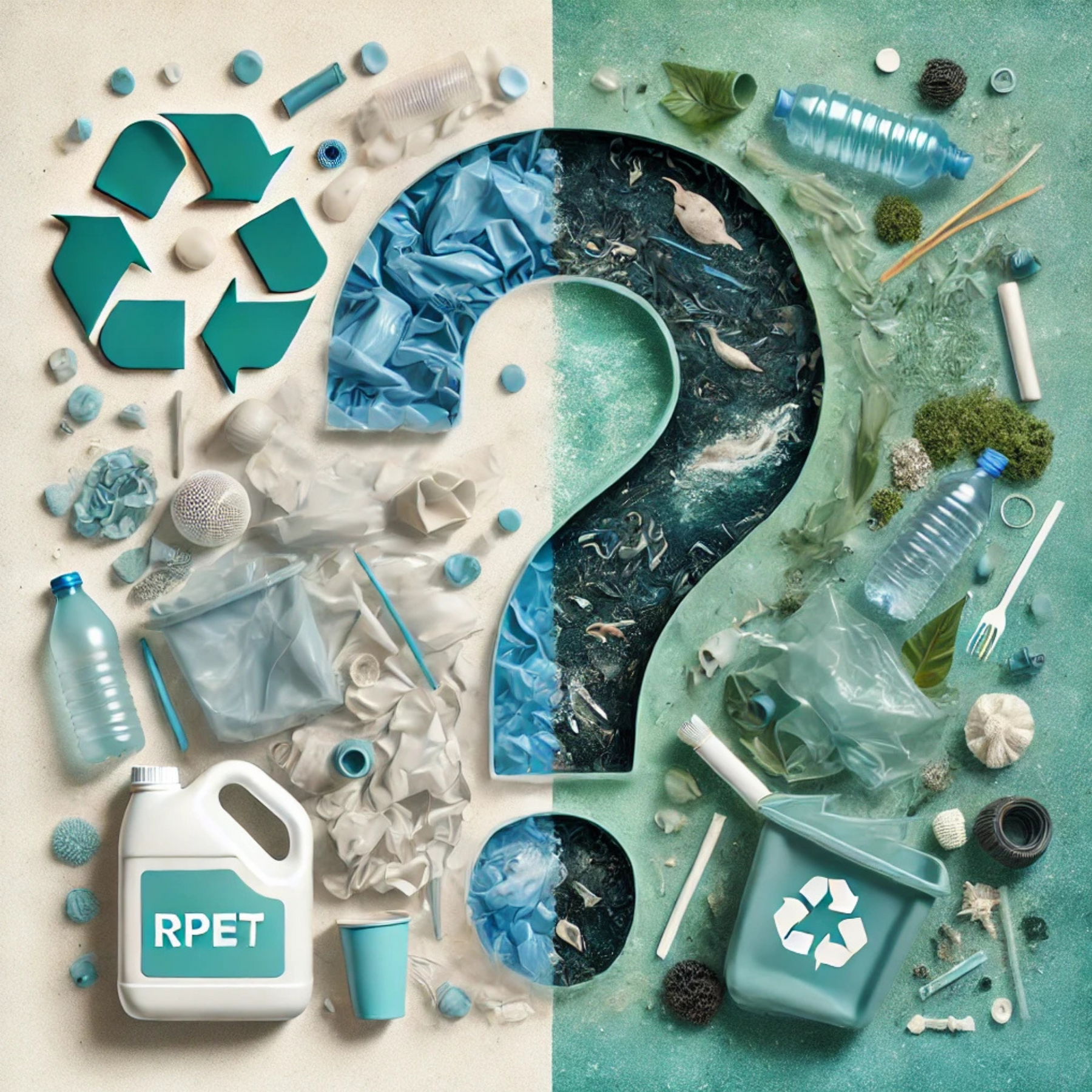
Is RPET Really an Eco-Friendly Choice? 🌍♻️
In the search for more sustainable materials, RPET (Recycled Polyethylene Terephthalate) has become a popular choice in the eco-friendly market. At first glance, it seems like a great solution—plastic bottles are collected, processed, and transformed into new products, reducing waste and giving plastic a second life. But is RPET truly as sustainable as it appears? Let’s take a closer look.
What is RPET?
RPET is made from recycled plastic, mainly post-consumer PET bottles. Instead of ending up in landfills or the ocean, these bottles are cleaned, melted down, and reformed into new materials, which are often used in clothing, bags, packaging, and other products.
At first, this process sounds like a perfect solution to the plastic waste crisis. However, while RPET does have some benefits, it also raises serious concerns regarding sustainability, environmental impact, and long-term viability.
The Problems with RPET
🔹 Still a Form of Plastic – RPET may come from recycled sources, but at the end of the day, it is still plastic. This means it does not biodegrade and will eventually break down into microplastics, which can harm ecosystems, wildlife, and human health.
🔹 Microplastics and Pollution – Every time an RPET product is washed or used, it can release microplastic fibers into the environment. These tiny plastic particles are nearly impossible to remove from water sources and have been found in oceans, soil, and even in our bodies.
🔹 Limited Recyclability – Unlike glass or metal, which can be recycled indefinitely, RPET has a limit. Each time plastic is recycled, its quality degrades, meaning RPET products often cannot be recycled again and eventually end up as waste.
🔹 Chemical Processing – The process of recycling PET into RPET requires energy and chemical treatments that can have their own environmental costs. The use of dyes, coatings, and additives in RPET products can also make them harder to recycle in the future.
What Are the Alternatives?
If RPET isn’t the ideal solution, what should businesses and individuals look for instead?
✅ Natural and Biodegradable Materials – Materials such as organic cotton, bamboo, cork, mycelium, and natural rubber are much better long-term solutions, as they return to nature without harming ecosystems.
✅ High-Quality, Long-Lasting Products – Instead of focusing on recycled plastic, investing in high-quality, durable materials that don’t need frequent replacement is a smarter and more sustainable choice.
✅ Truly Circular Solutions – Look for materials that can be fully reused or composted instead of materials that degrade in quality after each recycling cycle.
Eco Snuggle’s Commitment to Sustainability
At Eco Snuggle, we carefully select our products and materials to ensure they meet the highest sustainability standards. While RPET is often marketed as an eco-friendly alternative, we believe in going beyond quick fixes and offering truly sustainable solutions for businesses.
We prioritize organic, biodegradable, and recyclable materials that reduce environmental harm and promote long-term sustainability. Every choice matters—let’s work together to create a greener, cleaner future!
